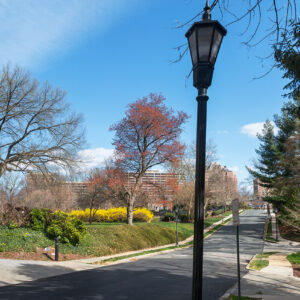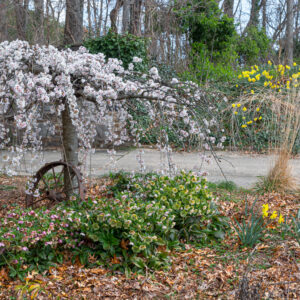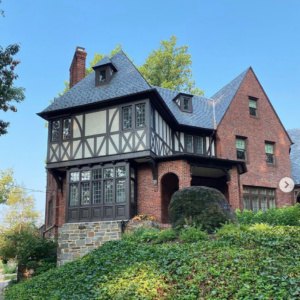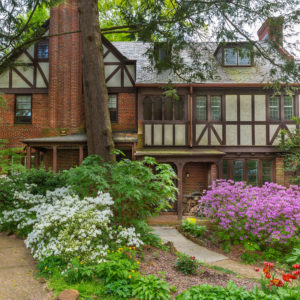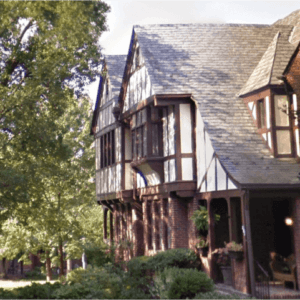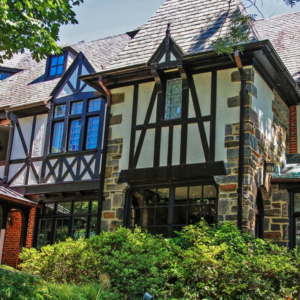Townhouses on Tuscany Rd and Ridgemede Rd
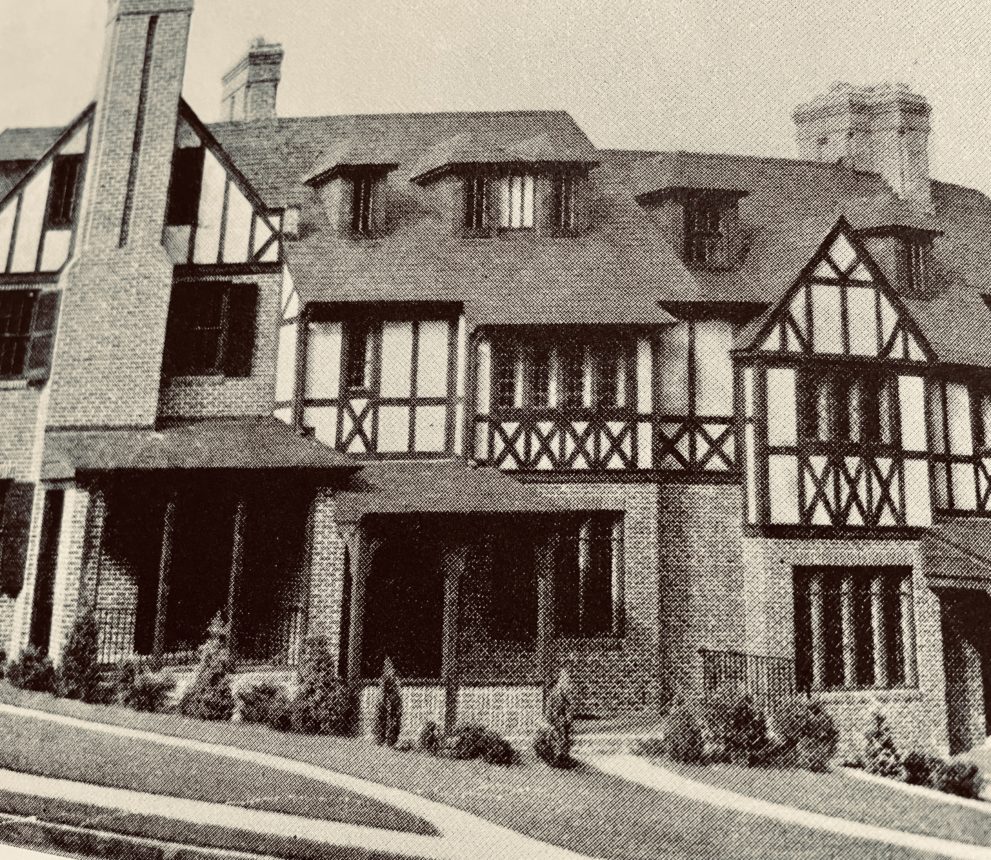
At the end of the 1920s, the homes were built on Ridgemede and Tuscany. Building in this area posed an engineering problem compared to the homes on Cloverhill and Canterbury built on level ground. The houses had to conform to the slopes and hills, or the land would have to be leveled. Fortunately, the developers and builders followed the Roland Park Company’s example and Frederick Law Olmsted’s design theory and built with respect for the land as it is.The Robinson and Slagle Company purchased a sizable tract in the area and began construction of the houses in 1928. They built the first four houses at the Tuscany-Ridgemede intersection and three more at the bottom of Tuscany Road. The company went bankrupt, and the Mullan Contracting Company took over the work. The Mullan’s built the rest of the houses on Tuscany and Ridgemede Roads.
Each townhouse on Ridgemede and Tuscany is different from the others. They have certain features in common: a Tudor design, panes of Venetian glass in leaded casement windows, a fireplace, interesting stone and brickwork, slate roofs, handsome wood trim. On the second floor there is a master bedroom (some with fireplaces) and a bathroom, two other roomy bedrooms, a second bathroom. On the third floor there are two bedrooms, a full bath and large storage closets. Some of the houses have a finished room in the basement with a stone fireplace. Most houses have a garage built into the basement part of the house. There is one group of homes on Tuscany where the garages are built into the hillside.
John Ahlers was the architect of the first homes located at 213-215 Tuscany and 201-203 Ridgemede. Ahlers continued his work on these houses after the Mullan Company took over the building project. He left to design the Original Northwood neighborhood with the Roland Park Company. The Mullan Company employed architect Cyril Hebrank to finish the houses and retained Ahlers’ Tudor designs. So successful was the entire development that Gardens, Houses, and People, in September 1938 issue described Tuscany as “an ideal place to live.”
